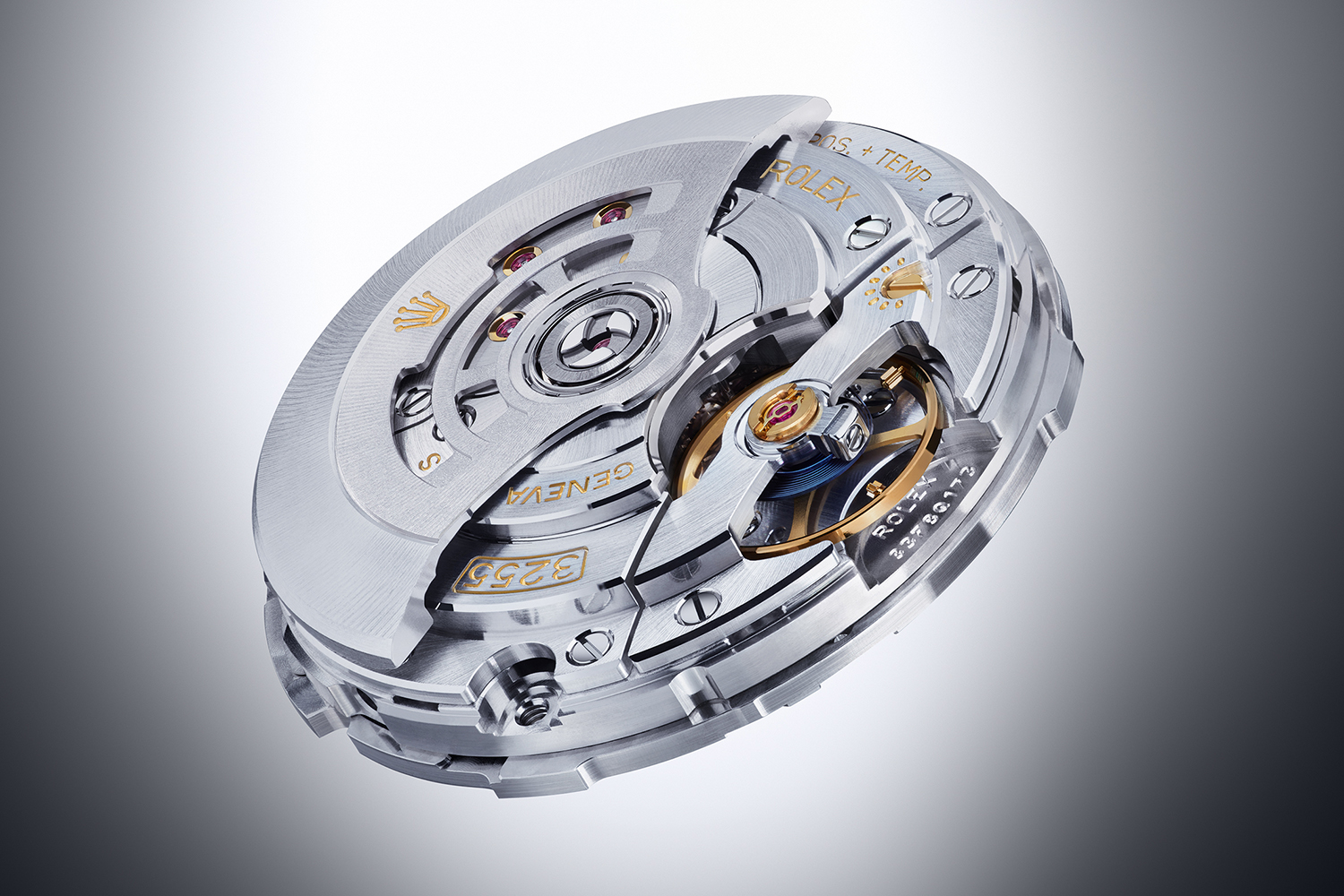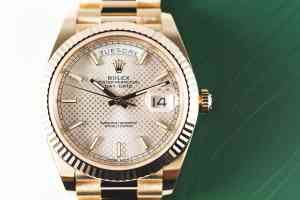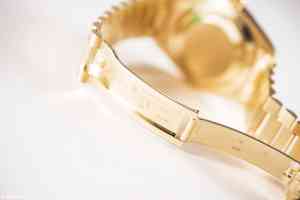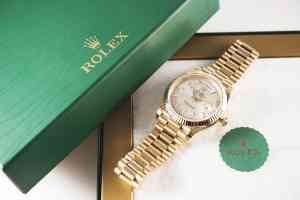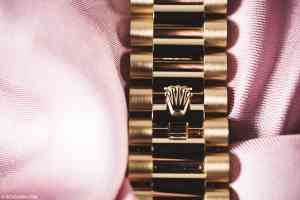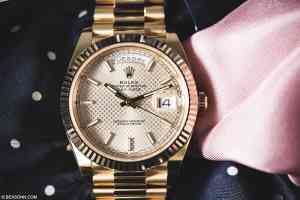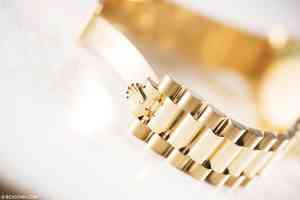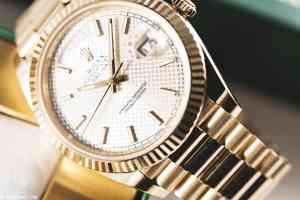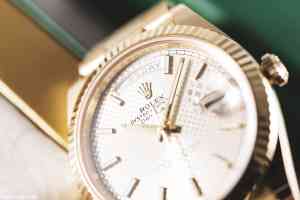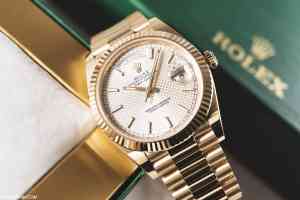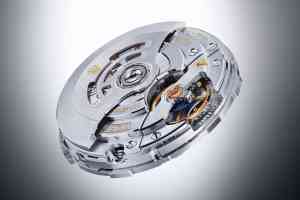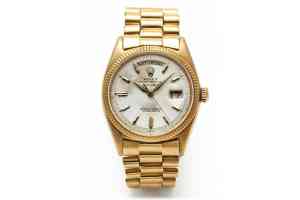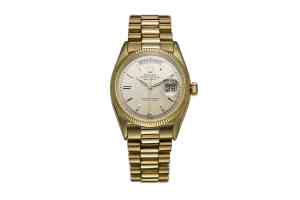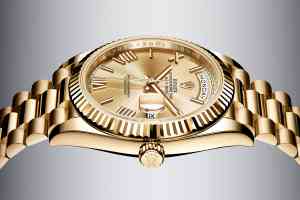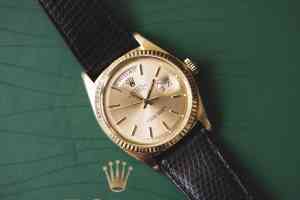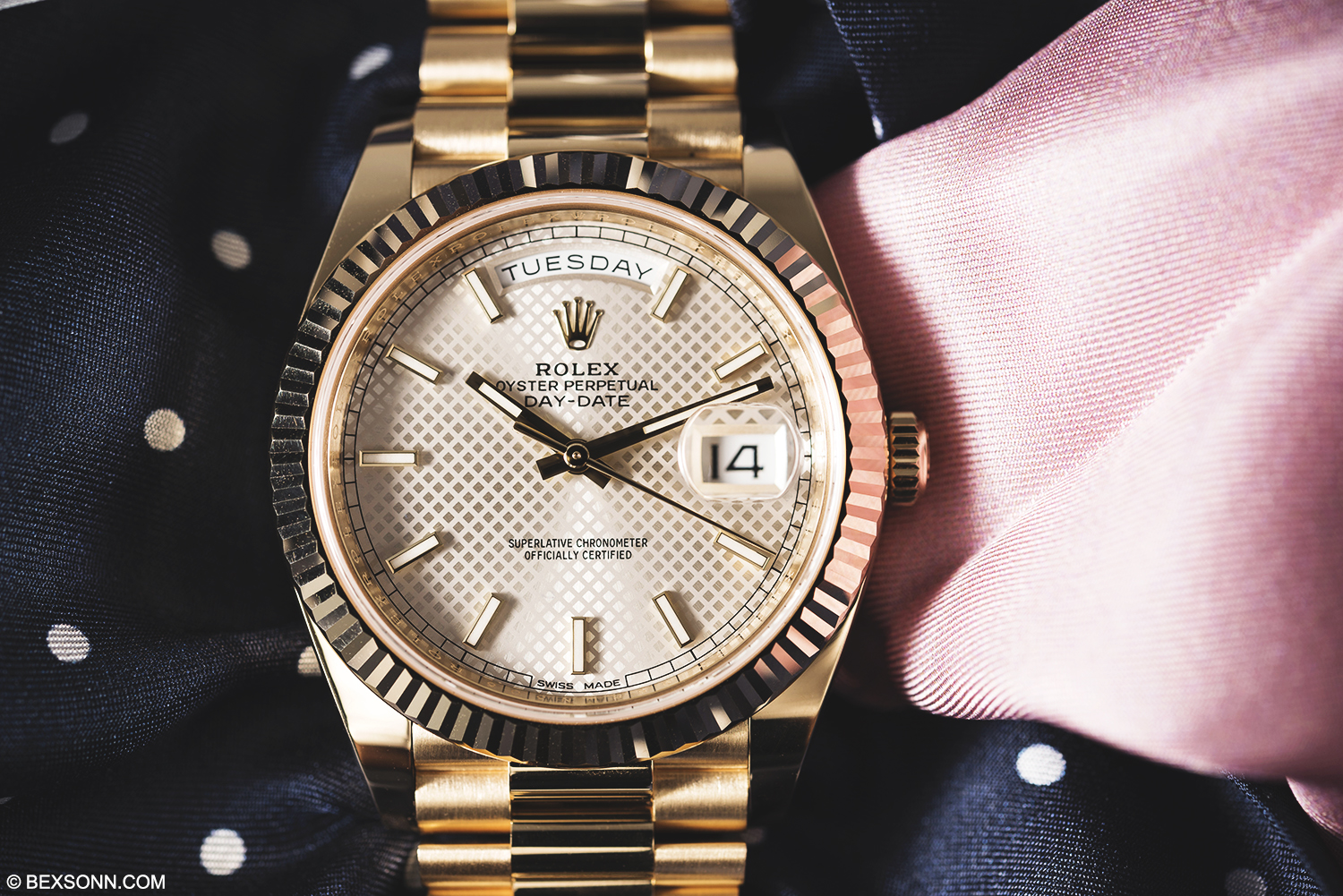 Rolex Day-Date 40: During Baselworld 2015 Rolex introduced a new Day-Date or “President” as it is also known. A few weeks ago Rolex were kind enough to loan me the new Day-Date 40 for some in-depth, hands-on analysis. Now, I’ve always had a bit of a soft spot for the Day-Date – who am I kidding, in all honesty I have a bit of a thing for Rolex full stop. There is just something about Rolex, regardless of all the ostentatious associations of the brand. For me, I find it intriguing that one watch brand can have such an impact on people’s perceptions and in some cases behaviour. Rolex transcend the term of just another watch brand, to many they are the brand to own a timepiece from and in my opinion this is very true but what is always interesting is the story behind their timepieces. People often own a Rolex because it is a Rolex and no other reason and the Day-Date is definitely one of those watches that is bought based on this fact. But like I already said, there is a story behind their timepieces and I shall shed some light on the Day-Date’s history.
Rolex Day-Date 40: During Baselworld 2015 Rolex introduced a new Day-Date or “President” as it is also known. A few weeks ago Rolex were kind enough to loan me the new Day-Date 40 for some in-depth, hands-on analysis. Now, I’ve always had a bit of a soft spot for the Day-Date – who am I kidding, in all honesty I have a bit of a thing for Rolex full stop. There is just something about Rolex, regardless of all the ostentatious associations of the brand. For me, I find it intriguing that one watch brand can have such an impact on people’s perceptions and in some cases behaviour. Rolex transcend the term of just another watch brand, to many they are the brand to own a timepiece from and in my opinion this is very true but what is always interesting is the story behind their timepieces. People often own a Rolex because it is a Rolex and no other reason and the Day-Date is definitely one of those watches that is bought based on this fact. But like I already said, there is a story behind their timepieces and I shall shed some light on the Day-Date’s history.
 THE DAY-DATE “PRESIDENT”
THE DAY-DATE “PRESIDENT”
Till this day Rolex have never really been considered as a watch manufacturer to produce complicated timepieces and yet they do. Back in 1956 the Day-Date was one of their most complicated timepieces. Prior to this, Rolex had endured a bit of a barren spell in the complicated watch department, however with the patent of the Day-Date in 1955 and it’s official release just a year later, the new ref. 6511 Day-Date brought an end to this. As the name suggests it does just that; at 12 o’clock is an aperture that displays the day utilising the full spelling and a date window at 3 o’clock in the same location to that of the Datejust. With the use of an extra disc and the mechanism that made this all work, not to mention it was an Oyster Perpetual – this all meant it had quite a considerable amount of wrist presence.
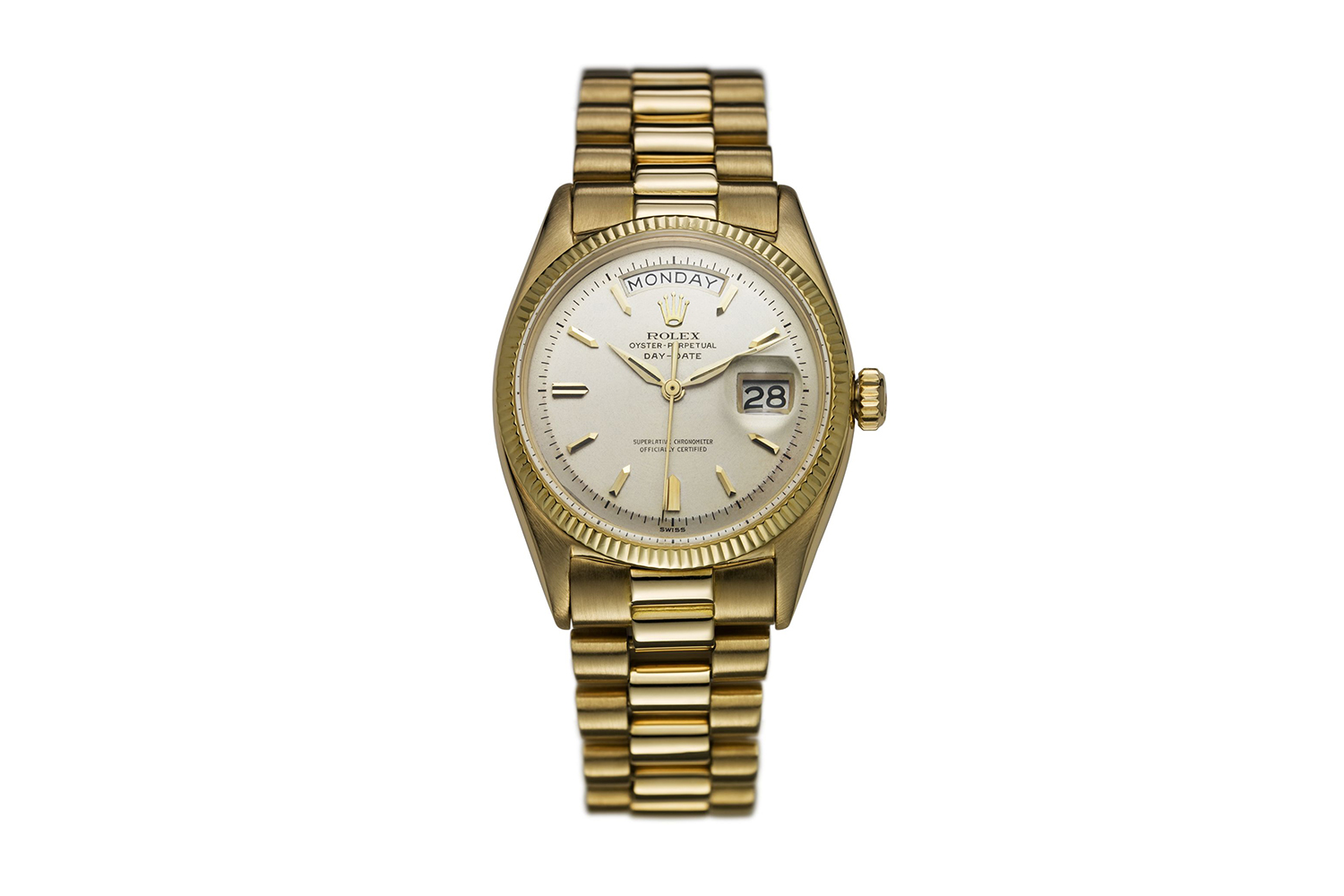 The First Rolex Day-Date reference 6511
The First Rolex Day-Date reference 6511
Introduced as more of a niche Rolex model, the Day-Date soon began to garner interest and after Rolex also introduced the concealed bracelet, known as the “President” – as an additional option. It soon became apparent the Day-Date would be something of an iconic timepiece for Rolex.
Now, what is quite interesting is that the Day-Date earned the nickname “President” because Rolex had reportedly given one to the then President of the United States of America – Dwight Eisenhower. Though some sources say he was actually given the Datejust on a Presidential bracelet. Whether this is true or not the fact that several other U.S. Presidents wore a Day-Date, kind of makes that minute detail rather irrelevant.
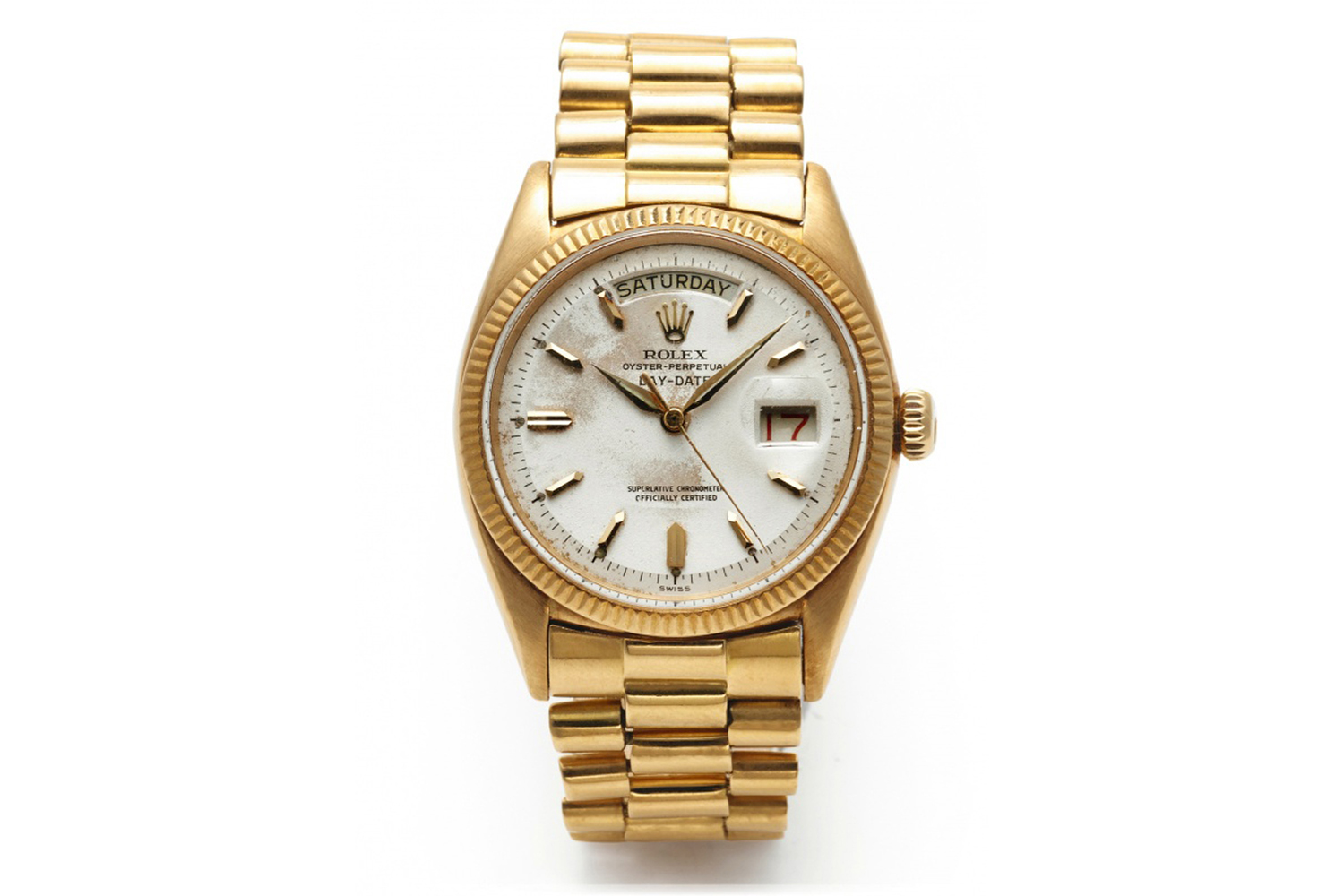 Rolex Day-Date reference 6611: Image via Antiquorum
Rolex Day-Date reference 6611: Image via Antiquorum
As mentioned the reference 6511 was the Day-Date model that Rolex introduced, which lasted just over a year before it was replaced by the, externally identical, 6611. This model featured the new calibre 1055 movement that incorporated a free-sprung Micro-Stella balance and was the first to be labelled “Superlative Chronometer Officially Certified” on the dial. In 1959, in an effort to exceed what was previously achieved; Rolex introduced the reference 1803 (that till this day is one of my favourite Day-Date references), which made use of the calibre 1555. While the 1803 was aesthetically different from the 6611, the only major noted difference was the speed with which this calibre ran at: 18,000bph. The 1803 also saw another minor change to the movement with the calibre 1556 receiving a further increase in bph to 19,800.
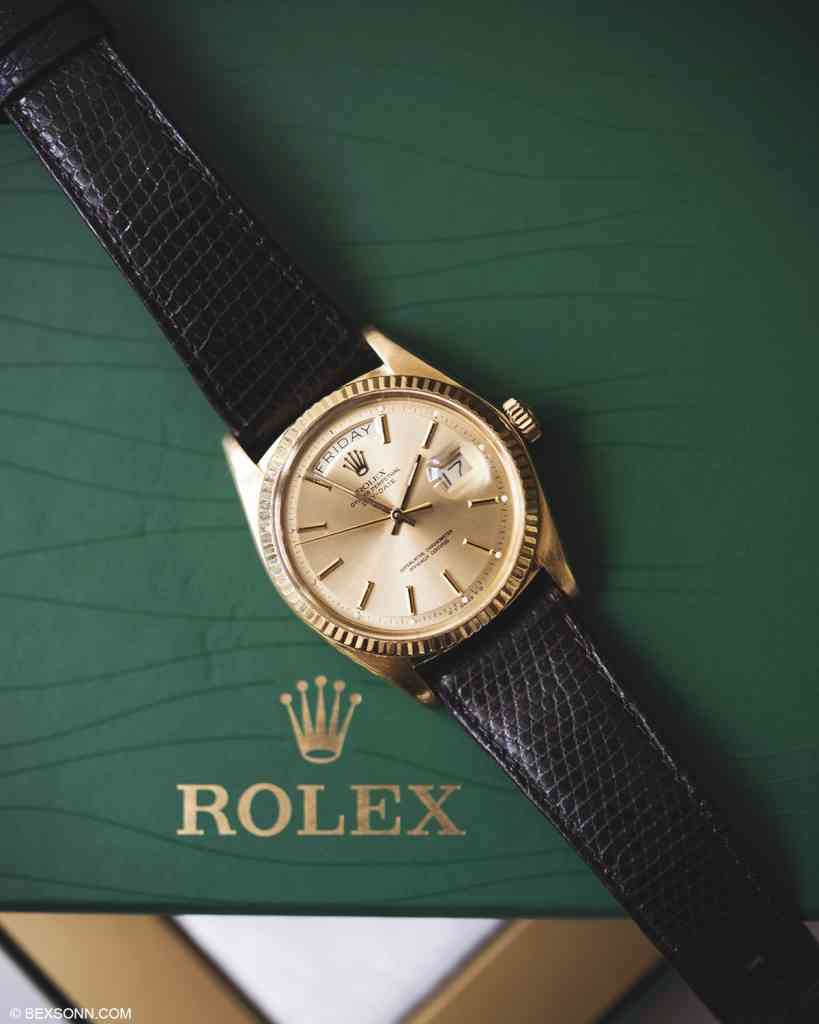 Rolex Day-Date reference 1803
Rolex Day-Date reference 1803
Probably the biggest upgrade feature the Day-Date ever saw was in 1977, when the quickset function was introduced. The calibre 3055 solved one of the biggest issues with the Day-Date. Before this point the wearer would have to continuously turn the crown until the desired date was reached. However, with the quickset feature this allowed the wearer to pull the crown to the second position and in just a few turns the desired date was displayed. But this wasn’t just a feature that stopped at the Day-Date; by 1983 all Rolex models that featured a date complication would utilise this feature.
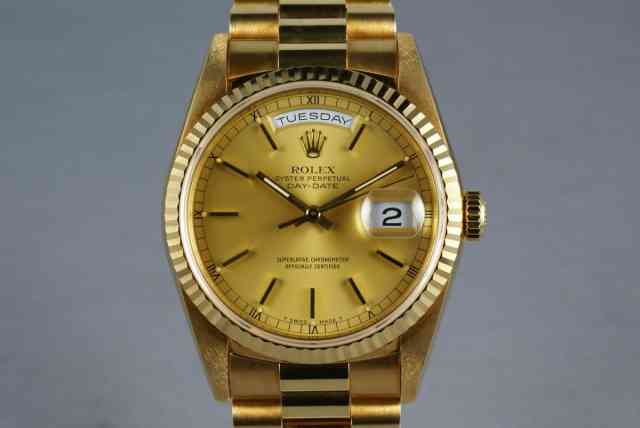 Rolex Day-Date reference 18238: Image via HQ Milton
Rolex Day-Date reference 18238: Image via HQ Milton
In 1988/89 the Day-Date saw another significant update to the movement that was known as the “Double Quick Set”, in the shape of the calibre 3155. This was utilised in the reference 18238 and it made setting the Day and Date an easier task.
These earlier models of the Day-Date are in my opinion the true “President” timepieces and while many more references came after, for me, some of the essence of the Day-Date was lost – until this year when the new Day-Date 40 was unveiled at Baselworld.
 THE DAY-DATE 40
THE DAY-DATE 40
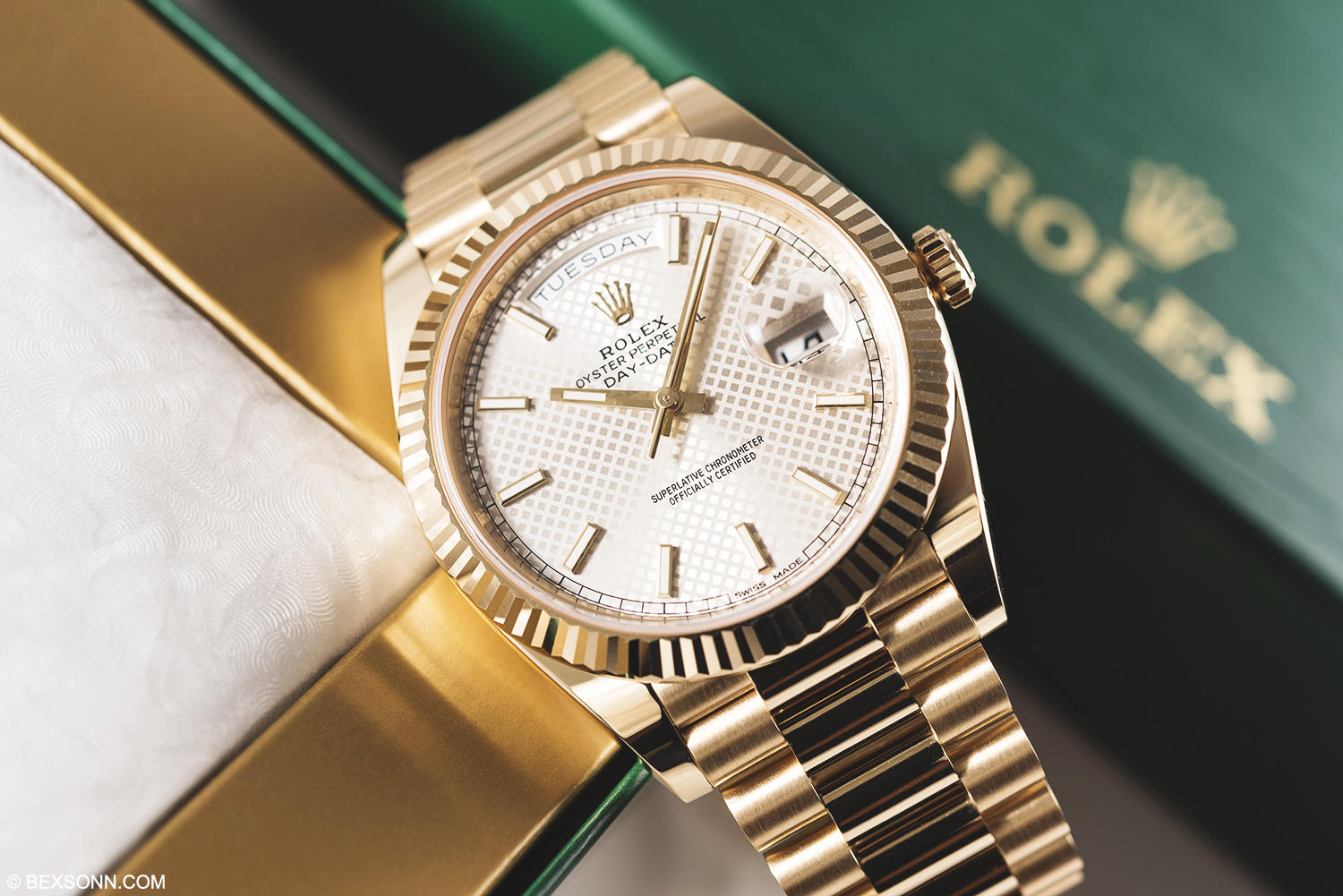 Like I already mentioned the Day-Date has always been a favourite of mine, even growing up as child of all the Rolex my dad owned this one sticks out more than any other. The Day-Date is the Rolex symbol of excellence and prestige; it is the timepiece you reward yourself with. Though nowadays it has become more a symbol of opulence but this doesn’t diminish its meaning. The classic Day-Date’s mentioned above all came in a 36 mm case and can be considered a bit on the smaller side of things, without mentioning the Day-Date II, which featured a 41 mm case but remember I used the term classic here people. Plus, if I’m honest the Day-Date II lacked the finesse of the Day-Date.
Like I already mentioned the Day-Date has always been a favourite of mine, even growing up as child of all the Rolex my dad owned this one sticks out more than any other. The Day-Date is the Rolex symbol of excellence and prestige; it is the timepiece you reward yourself with. Though nowadays it has become more a symbol of opulence but this doesn’t diminish its meaning. The classic Day-Date’s mentioned above all came in a 36 mm case and can be considered a bit on the smaller side of things, without mentioning the Day-Date II, which featured a 41 mm case but remember I used the term classic here people. Plus, if I’m honest the Day-Date II lacked the finesse of the Day-Date.
 THE DIAL
THE DIAL
The new Day-Date 40 is accompanied with an array of new elaborate dials, which feature a combination of high technology and traditional know-how. Utilising laser-etching techniques, motifs are applied to a traditional sunray finish for a particularly sophisticated and nostalgic effect.
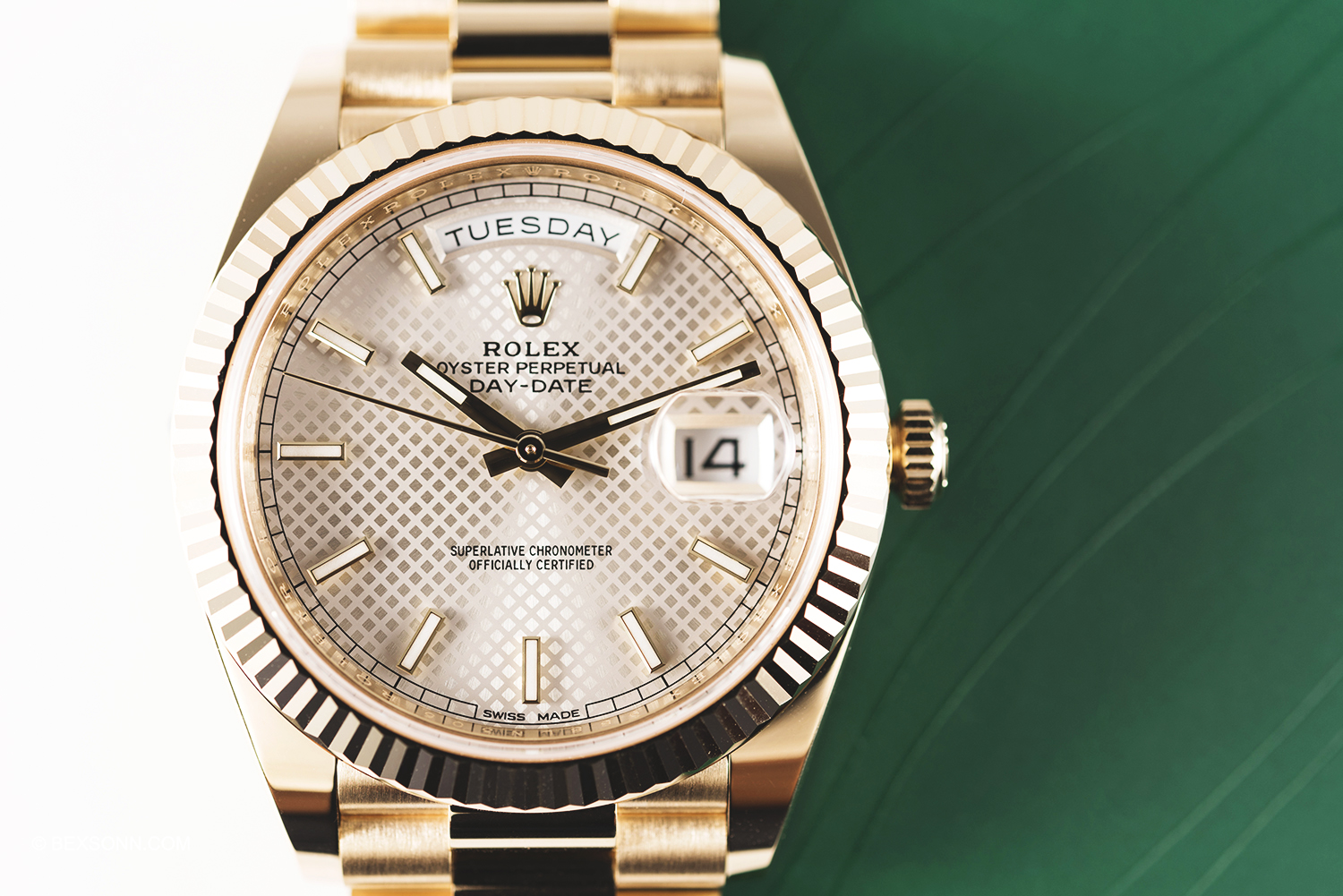 The Day-Date 40 we managed to get our hands on sported a champagne diagonal motif dial on sunray finish (which is very reminiscent of the Rolex waffle dials), with a black outer railroad track minute scale. This particular dial also features luminous block markers instead of the roman numerals dial, which can be found on the sunray champagne dial. While the use of block markers is in-keeping with the classic Day-Date style, I do feel the diagonal motif doesn’t work as well with the 18-carat yellow gold case as it does with some others. Of course when choosing your Day-Date you’ll have a choice of what style of dial you’d like. As always, at 12 o’clock is the day aperture and at 3 o’clock is the date window that is bold and easy to read. The hour and minutes hands are classic matchstick styles that are of course luminous.
The Day-Date 40 we managed to get our hands on sported a champagne diagonal motif dial on sunray finish (which is very reminiscent of the Rolex waffle dials), with a black outer railroad track minute scale. This particular dial also features luminous block markers instead of the roman numerals dial, which can be found on the sunray champagne dial. While the use of block markers is in-keeping with the classic Day-Date style, I do feel the diagonal motif doesn’t work as well with the 18-carat yellow gold case as it does with some others. Of course when choosing your Day-Date you’ll have a choice of what style of dial you’d like. As always, at 12 o’clock is the day aperture and at 3 o’clock is the date window that is bold and easy to read. The hour and minutes hands are classic matchstick styles that are of course luminous.
 THE CASE & BRACELET
THE CASE & BRACELET
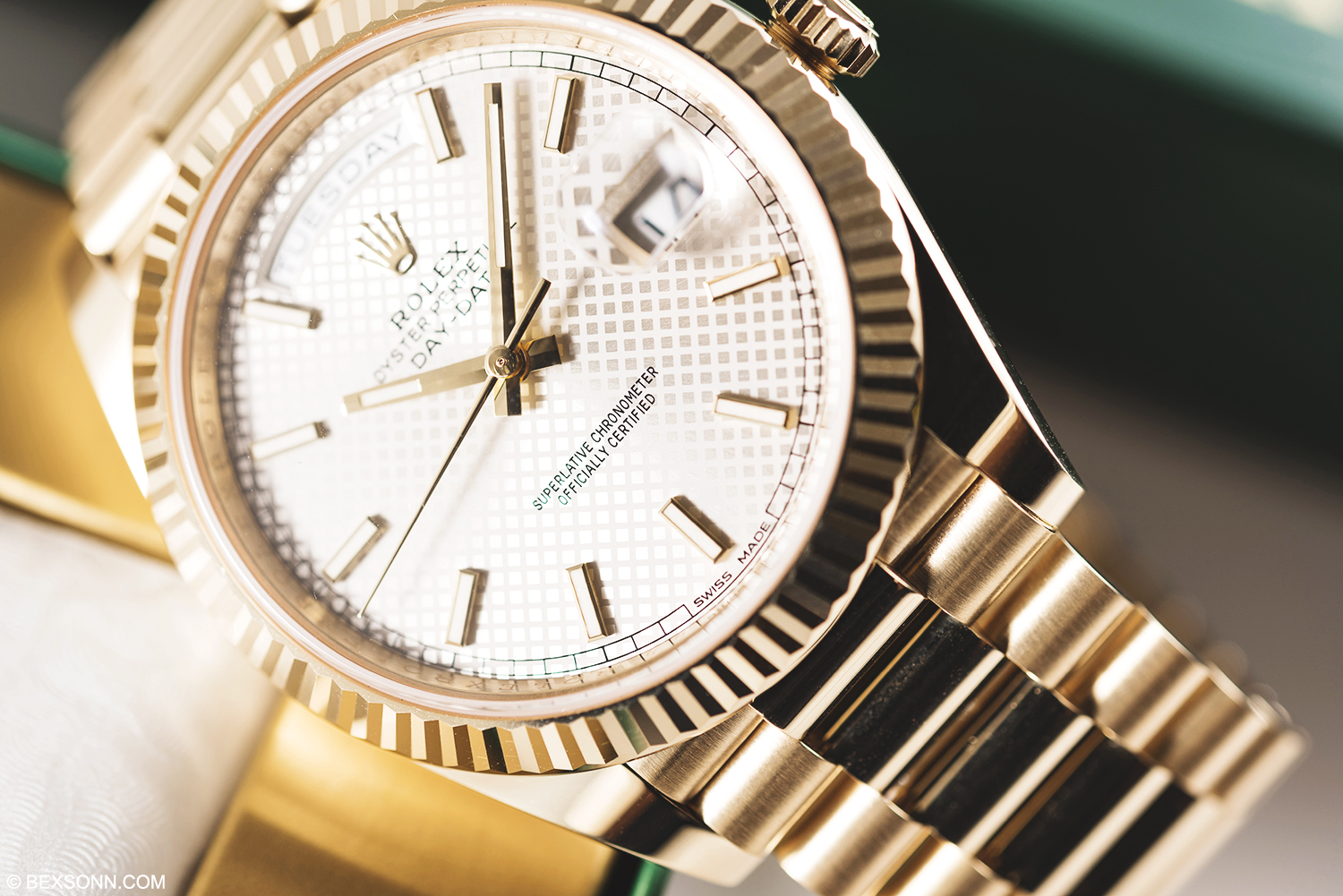 The new Day-Date 40 when introduced at Basel this year was presented in 18-carat white-gold and yellow-gold, as well as Everose-gold and or course platinum. Just as a note these pieces are pretty much distinct by the fluted bezel. You’ll notice that only the gold versions feature a fluted bezel, while the platinum versions features a smooth bezel and of course, I am sure there will be a diamond set bezel too. The Oyster case on the new Day-Date 40, features a monobloc middle case with screw down case back and a twinlock screw down crown, making it waterproof up to 100 metres.
The new Day-Date 40 when introduced at Basel this year was presented in 18-carat white-gold and yellow-gold, as well as Everose-gold and or course platinum. Just as a note these pieces are pretty much distinct by the fluted bezel. You’ll notice that only the gold versions feature a fluted bezel, while the platinum versions features a smooth bezel and of course, I am sure there will be a diamond set bezel too. The Oyster case on the new Day-Date 40, features a monobloc middle case with screw down case back and a twinlock screw down crown, making it waterproof up to 100 metres.
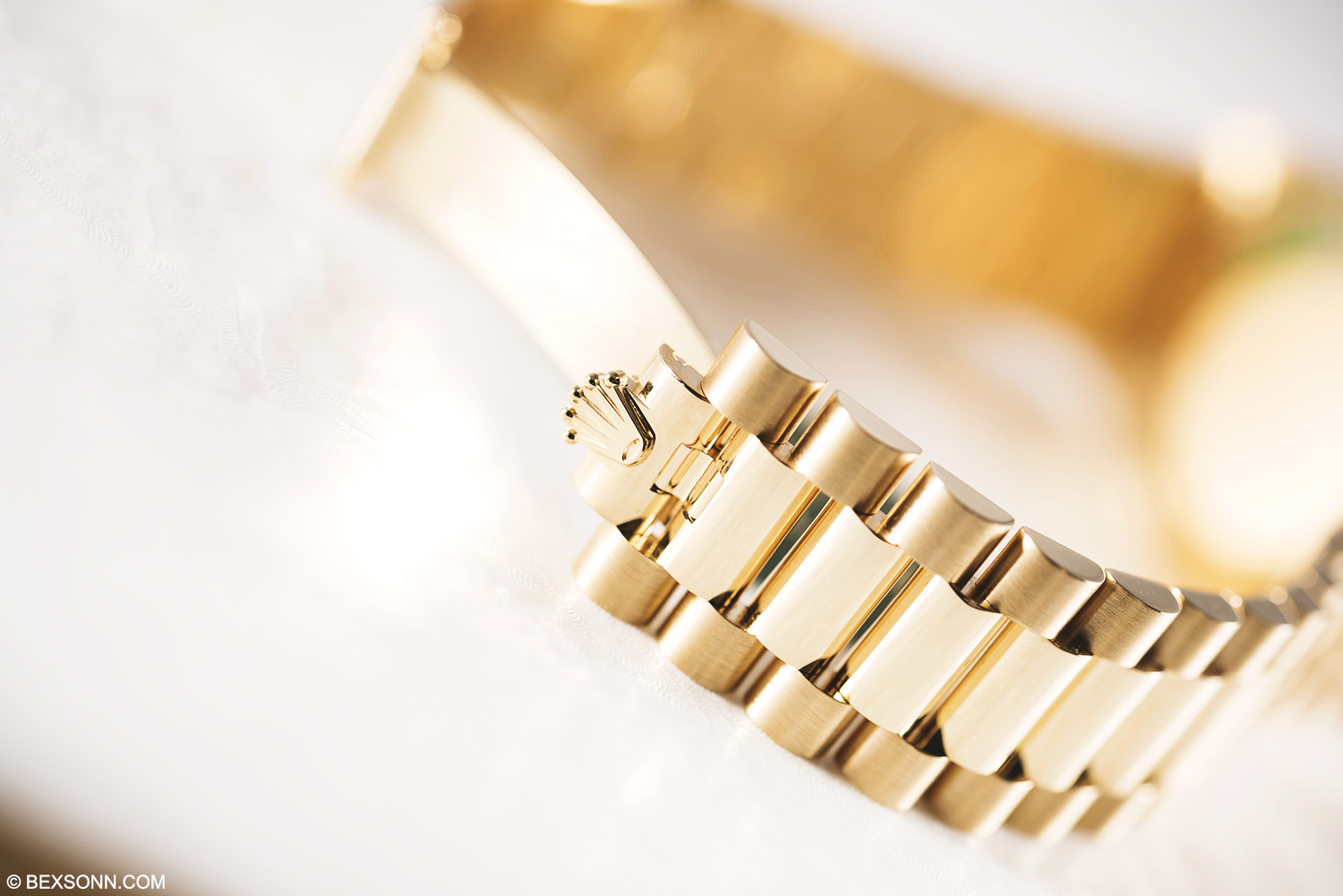 No Day-Date would be complete without a “President” bracelet and each one is available in matching case metal. Designed specially for the Day-Date when launched in 1956, as mentioned above is a longstanding design of the Day-Date. Made from solid gold or platinum, the bracelet has three semi-circular links that make wearing the Day-Date 40 rather comfortable. It is now equipped with ceramic inserts inside the links, enhancing its suppleness and durability. A new concealed attachment beneath the bezel ensures seamless visual continuity between the bracelet and case. The new-generation concealed Crownclasp, opens with a hinged Rolex crown, which is the final aesthetic and functional touch to this well-known bracelet.
No Day-Date would be complete without a “President” bracelet and each one is available in matching case metal. Designed specially for the Day-Date when launched in 1956, as mentioned above is a longstanding design of the Day-Date. Made from solid gold or platinum, the bracelet has three semi-circular links that make wearing the Day-Date 40 rather comfortable. It is now equipped with ceramic inserts inside the links, enhancing its suppleness and durability. A new concealed attachment beneath the bezel ensures seamless visual continuity between the bracelet and case. The new-generation concealed Crownclasp, opens with a hinged Rolex crown, which is the final aesthetic and functional touch to this well-known bracelet.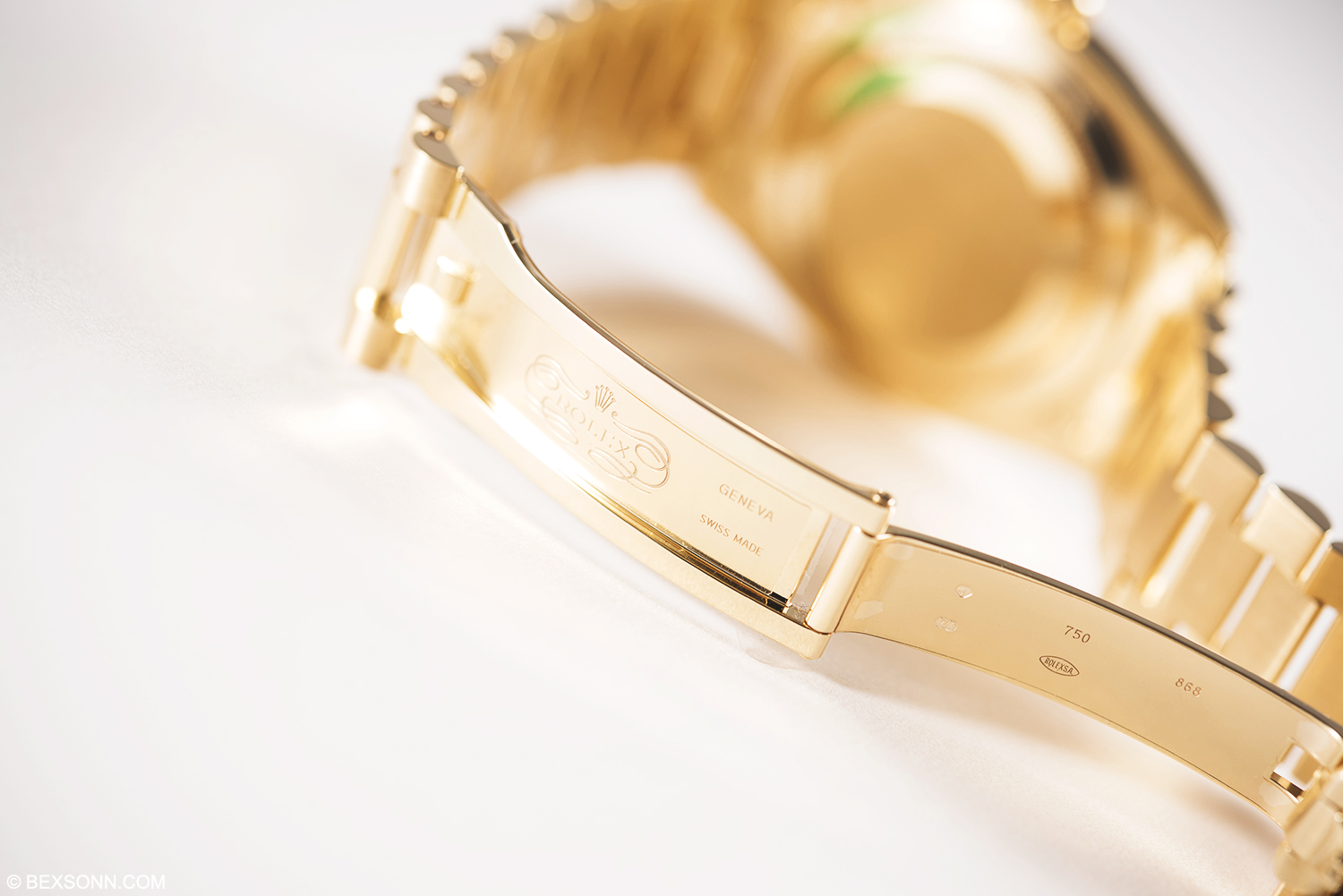
 THE MOVEMENT
THE MOVEMENT
Probably the biggest change that will go unnoticed by many but is most definitely worth mentioning. The Day-Date 40 is equipped with a new in-house Rolex manufactured movement: the Calibre 3255. Nowadays it goes without saying that any movement made by Rolex is Certified as a Swiss chronometer by COSC (Swiss Official Chronometer Testing Institute). However, it is tested a second time by Rolex after being cased to ensure that in everyday use it satisfies Rolex’s criteria for precision that is -2 / +2 seconds per day. This control of the final precision of the assembled watch is carried out using a methodology and high-technology equipment specially developed by Rolex.
This self-winding mechanical movement showcases Rolex technological prowess, with 14 patents, it offers fundamental gains in terms of precision, power reserve, resistance to shocks and magnetism (that in today’s world is a constant problem for mechanical watches), as well as ease of use and reliability. It also incorporates the new escapement called Chronergy that is patented by Rolex. Made of nickel-phosphorus, it is also impervious to magnetic interference. The oscillator, the true heart of the watch, has an optimised blue Parachrom hairspring. Patented and manufactured by Rolex in an exclusive paramagnetic alloy, it’s up to 10 times more precise than a traditional hairspring in case of shocks. Thanks to a new barrel architecture and the escapement’s superior efficiency, the power reserve of calibre 3255 extends to 70 hours, which is a nice touch by Rolex. Meaning you could take your Day-Date 40 off on a Friday not wear it all weekend and then on Monday morning it’s there waiting to be worn and still ticking.
 FINAL WORD
FINAL WORD
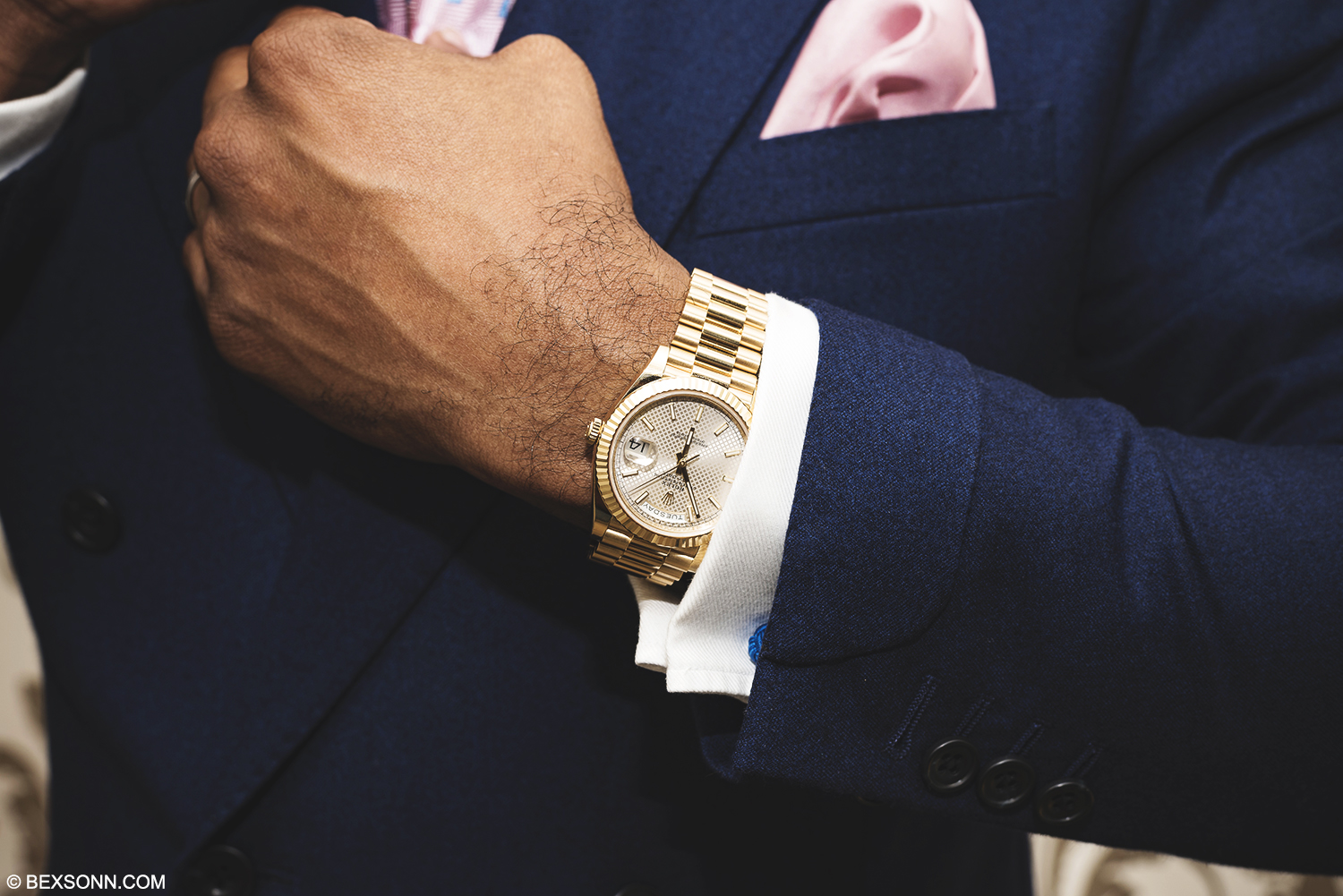 The new Day-Date 40 is in my opinion one massive step in the right direction for Rolex marquee timepiece. With the large watch trend on a downturn the Day-Date 40 replaces the Day-Date II, which has never quite looked right to me. The bracelet always appeared too large for the watch it self that just threw the whole aesthetic balance out of whack. Even the colourful Day-Date’s Rolex released a couple of years ago, while great and well sized at 36 mm, were not deserved of the nickname ‘President’. They just didn’t exude the presence of this new 40 mm iteration.
The new Day-Date 40 is in my opinion one massive step in the right direction for Rolex marquee timepiece. With the large watch trend on a downturn the Day-Date 40 replaces the Day-Date II, which has never quite looked right to me. The bracelet always appeared too large for the watch it self that just threw the whole aesthetic balance out of whack. Even the colourful Day-Date’s Rolex released a couple of years ago, while great and well sized at 36 mm, were not deserved of the nickname ‘President’. They just didn’t exude the presence of this new 40 mm iteration.
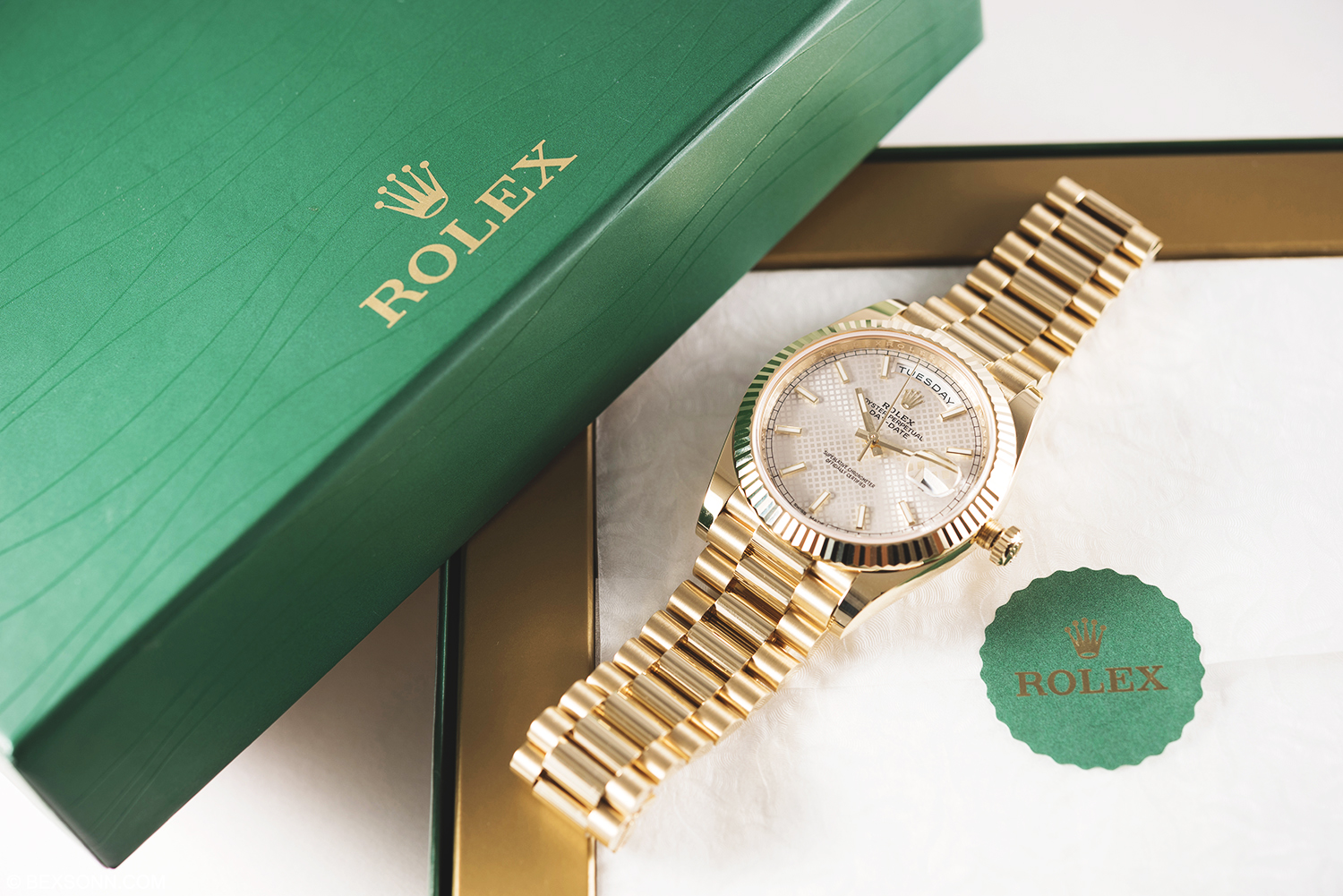 What I like about the new Day-Date 40 is what you can’t see: the movement. It is an element that is simply forgotten because it’s something that Rolex do so well. Equipped with a robust, reliable and accurate movement that just keeps working. As mentioned before, I’ve always had a great appreciation of the Rolex Day-Date “President” and to me it’s only ever looked right in yellow-gold, so if I had a choice and the money of course, this particular piece would be my ideal – albeit with the champagne sunray roman numeral dial. I think it’s sufficed to say the President has returned to its rightful place amongst the Rolex collection.
What I like about the new Day-Date 40 is what you can’t see: the movement. It is an element that is simply forgotten because it’s something that Rolex do so well. Equipped with a robust, reliable and accurate movement that just keeps working. As mentioned before, I’ve always had a great appreciation of the Rolex Day-Date “President” and to me it’s only ever looked right in yellow-gold, so if I had a choice and the money of course, this particular piece would be my ideal – albeit with the champagne sunray roman numeral dial. I think it’s sufficed to say the President has returned to its rightful place amongst the Rolex collection.
Prices of the Rolex Day-Date 40 start at £23,300 for the yellow-gold, £25,100 for the Everose-gold and white-gold version and £41,700 for the platinum version. For more information on the new Day-Date 40, visit the official Rolex website.
